In 1771, Johann Wolfgang von Goethe (17491832) went to Strasbourg to study law. There, he had a love affair that later inspired the idyllic Dichtung und Wahrheit (1814). He then practiced law in Frankfurt, where he composed The Sorrows of Young Werther (1774). Goethe accepted an invitation from the Duke of Weimar in 1775 to join his court and for a decade held various official positions there. He spent 1787 in Italy, where he wrote Iphigenie auf Tauris and worked on the first part of Faust (1808). In 1791, Goethe was appointed director of the ducal theater, a position he held for twenty-two years. In 1806, Goethe married Christiane Vulpius, the mother of his four children. In the last year of his life, Goethe completed the second part of his masterpiece, Faust.
Marcelle Clements is a novelist and journalist who has contributed articles on culture, the arts, and politics to many national publications. She is the author of two books of nonfiction, The Dog Is Us and The Improvised Woman, and the novels Rock Me and Midsummer.
Elisabeth Krimmer is Professor of German at the University of California, Davis. Among her books are In the Company of Men: Cross-Dressed Women Around 1800,The Representation of War in German Literature: From 1800 to the Present, and (coedited with Patricia Simpson) Religion, Reason, and Culture in the Age of Goethe. Her articles have appeared in journals such as PMLA,The German Quarterly,Seminar,German Life and Letters, and Eighteenth-Century Fiction. She was awarded the essay prize of the Goethe Society of North America in 2006 and the Max Kade Prize for best article in The German Quarterly in 2010.

THE SORROWS OF
YOUNG WERTHER
and Selected Writings

J OHANN W OLFGANG VON G OETHE
TRANSLATED BY
Catherine Hutter
WITH AN INTRODUCTION BY
Marcelle Clements
AND A NEW AFTERWORD BY
Elisabeth Krimmer

SIGNET CLASSICS
SIGNET CLASSICS
Published by New American Library, a division of
Penguin Group (USA) Inc., 375 Hudson Street,
New York, New York 10014, USA
Penguin Group (Canada), 90 Eglinton Avenue East, Suite 700, Toronto,
Ontario M4P 2Y3, Canada (a division of Pearson Penguin Canada Inc.)
Penguin Books Ltd., 80 Strand, London WC2R 0RL, England
Penguin Ireland, 25 St. Stephens Green, Dublin 2,
Ireland (a division of Penguin Books Ltd)
Penguin Group (Australia), 707 Collins Street, Melbourne, Victoria 3008,
Australia (a division of Pearson Australia Group Pty. Ltd.)
Penguin Books India Pvt. Ltd., 11 Community Centre, Panchsheel Park,
New Delhi110 017, India
Penguin Group (NZ), 67 Apollo Drive, Rosedale, Auckland 0632,
New Zealand (a division of Pearson New Zealand Ltd.)
Penguin Books, Rosebank Office Park, 181 Jan Smuts Avenue,
Parktown North 2193, South Africa
Penguin China, B7 Jaiming Center, 27 East Third Ring Road North,
Chaoyang District, Beijing 100020, China
Penguin Books Ltd., Registered Offices:
80 Strand, London WC2R 0RL, England
Published by Signet Classics, an imprint of New American Library,
a division of Penguin Group (USA) Inc.
First Signet Classics Printing, August 1962
First Signet Classics Printing (Krimmer Afterword), March 2013
ISBN: 978-1-101-63548-3
Copyright Catherine Hutter, 1962
Introduction copyright Marcelle Clements, 2005
Afterword copyright Elisabeth Krimmer, 2013
All rights reserved. No part of this book may be reproduced, scanned, or distributed in any printed or electronic form without permission. Please do not participate in or encourage piracy of copyrighted materials in violation of the authors rights. Purchase only authorized editions.
 REGISTERED TRADEMARK MARCA REGISTRADA
REGISTERED TRADEMARK MARCA REGISTRADA

INTRODUCTION
Like many novels that survive their authors and their era to become literary monuments, The Sorrows of Young Werther is so heavily burdened by prestige and official responsibilities that we are surprised to discover it is only 130 pages long, the hastily written first novel of a very young author. Johann Wolfgang von Goethe was twenty-four years old when The Sorrows of Young Werther was published in 1774. I wrote Werther in four weeks, he tells us in his memoirs, without ever making a plan of the whole or previously putting any of it down on paper. The result was a slim book that told an old story: A beautiful youth, who seems to carry some sort of sadness within him, encounters a beautiful maiden. He is entranced by her, but she is promised to another. He kills himself.
From the very start, the notoriety of The Sorrows of Young Werther flooded its relationship with the reader; that is, long before it became clear that it would be one of Western Civilizations Great Books, the forerunner of the modern psychological novel and the apogee of the Sturm und Drang movement. It has never been possible to read The Sorrows of Young Werther without the interference of its reputation: It never got that grace period between publication and the moment when fame distorts the relationship between a book and its readers, before the critics speak and the word of mouth builds, before the climb in sales and, eventually, if all goes well, the ascension, the awards, the new editions, the translations, the place in the canon. Immediately
If further evidence was required of the reading publics limitless craving for all things Wertheror Wertherfieber (Werther fever), as it became knownthere was also a fashion for Werther-style liebestod, or love suicide. Picturesque young Wertherians, dressed in blue jackets and yellow vests just as Werther had been (because these items had been touched by Lotte and rendered sacred), leaped into rivers and drowned, a copy of The Sorrows of Young Werther in their pockets. Others shot themselves in the head as Werther had, while sitting at their writing desks on which copies of the book lay open. There is debate as to whether there was an epidemic of such deaths or a trickle, but today psychologists still refer to copycat suicide as the Werther Effect.
A novel about outsize desire, self-destruction and the need to flee urban civilization can be supposed to exert many types of bad influence on youthful enthusiasts, so it is difficult to imagine which of those themes was considered most dangerous but, in any event, the book was soon banned in several European citiesin some cases for as long as fifty years. There were German towns in which, for good measure, the blue-and-yellow outfit was banned as well. Naturally, such obstacles only intensified the Werther craze, and Wertherians became legion. Among the best known was Napolon, who said he brought

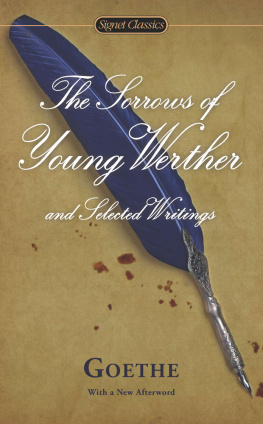
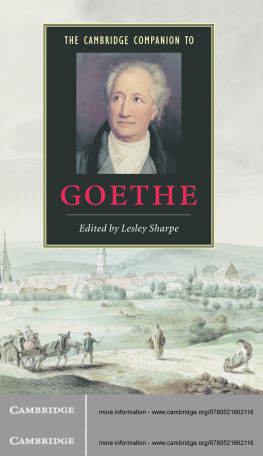
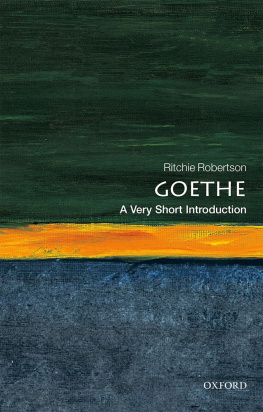
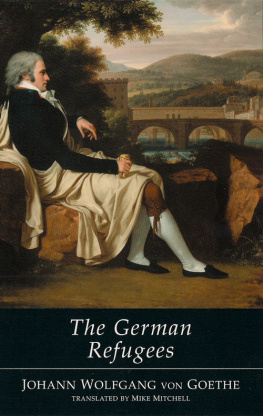



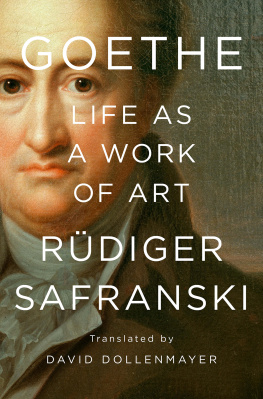



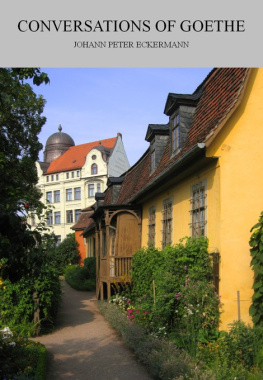



 REGISTERED TRADEMARK MARCA REGISTRADA
REGISTERED TRADEMARK MARCA REGISTRADA